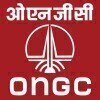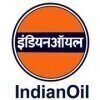Filter interviews by
NBTC GROUP Piping Supervisor Interview Questions and Answers
NBTC GROUP Piping Supervisor Interview Experiences
1 interview found
I applied via Recruitment Consulltant and was interviewed before May 2022. There were 4 interview rounds.

(1 Question)
- Q1. Isometric drawing based questions and Safety based questions
(1 Question)
- Q1. Salary Availability for company
(1 Question)
- Q1. Final in Site Construction manager asking some technical questions
Top trending discussions






Interview questions from similar companies

I applied via Naukri.com and was interviewed in May 2021. There was 1 interview round.
Interview Questionnaire
2 Questions
- Q1. How many experiences in reliance industry
- Q2. How many experiences in reliance retail
Interview Preparation Tips

(2 Questions)
- Q1. How long would you abord
- Q2. What is your expectation for salaray
Interview Preparation Tips

I applied via Campus Placement and was interviewed before Dec 2020. There was 1 interview round.
Interview Questionnaire
1 Question
- Q1. Based on your project
Interview Preparation Tips

I applied via Campus Placement and was interviewed before May 2020. There was 1 interview round.
Interview Questionnaire
2 Questions
- Q1. About college project
- Q2. Why you want this job
Interview Preparation Tips

I applied via Recruitment Consultant and was interviewed before Sep 2020. There was 1 interview round.
Interview Questionnaire
2 Questions
- Q1. Tell about yourself
- Q2. where you work befor
Interview Preparation Tips

Civil Site Engineer Interview Questions & Answers
Reliance Industriesposted on 16 Jan 2021
I applied via Naukri.com and was interviewed in Dec 2020. There was 1 interview round.
Interview Questionnaire
1 Question
- Q1. Related to civil quality engineer questions
Interview Preparation Tips

I applied via Campus Placement
Interview Preparation Tips
Mass transfer
Heat transfer
CRE
Skills: Core Courses Concepts
Duration: 2
College Name: IIT Madras
Motivation: No motivation whatsoever.

Engineer Interview Questions & Answers
Oil And Natural Gas Corporationposted on 10 Sep 2024
I applied via Company Website and was interviewed before Sep 2023. There were 2 interview rounds.
2 hrs quantitative and Current affairs
(2 Questions)
- Q1. What were doing after completion of your B Tech
- Ans.
After completing my B Tech, I pursued a Master's degree in Engineering to further enhance my skills and knowledge.
Enrolled in a Master's program in Engineering
Focused on specialized courses related to my field of interest
Participated in research projects and internships to gain practical experience
- Q2. What is generative AI
- Ans.
Generative AI is a type of artificial intelligence that is capable of creating new content, such as images, text, or music, based on patterns and examples it has been trained on.
Generative AI uses neural networks to generate new content based on patterns in existing data.
Examples of generative AI include DeepDream, which creates surreal images, and GPT-3, a language model that can generate human-like text.
Generative AI...
Interview Preparation Tips
Skills evaluated in this interview

I applied via Naukri.com and was interviewed in Aug 2023. There were 2 interview rounds.

(4 Questions)
- Q1. What are your qualification
- Q2. What do you know skill
- Q3. Where do you live
- Ans. I live in Lucknow at Raebareli
- Q4. I live in raebareli in uttar Pradesh
Interview Preparation Tips
NBTC GROUP Interview FAQs
Tell us how to improve this page.
NBTC GROUP Interviews By Designations
- NBTC GROUP HSE Coordinator Interview Questions
- NBTC GROUP Mobile Crane Operator Interview Questions
- NBTC GROUP Electrical Technician Interview Questions
- NBTC GROUP Construction Management Interview Questions
- NBTC GROUP Safety Officer Interview Questions
- NBTC GROUP HSE Officer Interview Questions
- NBTC GROUP Piping Supervisor Interview Questions
- NBTC GROUP QA QC Engineer Interview Questions
- Show more
Interview Questions for Popular Designations
- Piping Engineer Interview Questions
- Piping Execution Engineer Interview Questions
- Piping Designer Interview Questions
- Piping Foreman Interview Questions
- Mechanical Piping Engineer Interview Questions
- Piping Design Engineer Interview Questions
- Senior Piping Engineer Interview Questions
- Senior Electrical Engineer Interview Questions
- Show more
NBTC GROUP Piping Supervisor Interview Process
based on 1 interview
Interview experience
Interview Questions from Similar Companies
NBTC GROUP Piping Supervisor Reviews and Ratings
based on 17 reviews
Rating in categories
|
QA QC Engineer
28
salaries
| ₹6.9 L/yr - ₹26 L/yr |
|
HSE Officer
24
salaries
| ₹8.3 L/yr - ₹16 L/yr |
|
Mechanical Engineer
22
salaries
| ₹6.6 L/yr - ₹16 L/yr |
|
Piping Supervisor
20
salaries
| ₹6.6 L/yr - ₹15 L/yr |
|
Planning Engineer
19
salaries
| ₹6 L/yr - ₹24 L/yr |

Reliance Industries

Indian Oil Corporation

Shell

Oil And Natural Gas Corporation
- Home >
- Interviews >
- NBTC GROUP Interview Questions >
- NBTC GROUP Piping Supervisor Interview Questions












